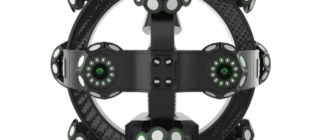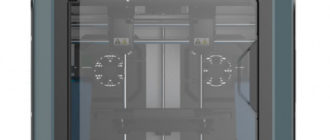The list of materials for additive manufacturing systems Studio System 2 production of Desktop Metal company added a filament filled with titanium alloy Ti-6Al-4V (Ti-64).
The Studio System 2 systems are designed for 3D printing of polymer-metal blanks with subsequent annealing and sintering into all-metal products in the office setting. The second, upgraded generation of the system has been offered since February 2021. The main innovation is that there is no need to etch the binder polymer before heat treatment, which significantly reduces the cost and labor intensity of the process.
Jonah Myerberg, Co-founder and CTO of Desktop Metal, said that titanium is a challenging material for bound metal printing. “…It is both extremely reactive in powder form and difficult to sinter,” he said “We are excited to be the first to commercialize the most common titanium alloy, Ti64, for 3D printing through our high-performance titanium parts.”

The picture above shows a 3D printed bracket with a gyroid-shaped structure made from titanium alloy instead of the 17-4PH stainless steel to reduce weight while maintaining the necessary functional strength and rigidity. This geometry would not have been possible with conventional manufacturing processes because of its complexity. 3D printing the Ti64 alloy part on the Studio System 2 reduced the weight of the product by 59 percent.
Ti64 is the most widely used titanium alloy, characterized by high strength, corrosion resistance and biocompatibility. The high strength-to-weight ratio makes Ti64 the ideal choice when producing functional parts for the aerospace, defense, automotive, and oil and gas industries. In addition, biocompatibility makes this alloy popular for surgical devices and implants.
The material exhibits a yield strength of 730 MPa, the tensile strength of 845 MPa, and elongation at a break of 17%, which exceeds the requirements of ASTM F2885-17 for medical implants made by injection molding.

The illustration above shows the drone mount, the fuel injector nozzle, and the ring of the electromechanical pointing and focusing mechanism of the handheld telescope. In the case of drones, the use of parts made of light alloys makes it possible to reduce the weight of drones as a whole, and hence the duration of the flight. For the second part – the fuel nozzle – it is not so much the weight that matters, but the high heat resistance, durability, and optimized geometry of internal channels. As for the last part, the low weight of 3D printed titanium components makes it possible to use less powerful actuators, while also reducing wear and tear on the parts and the cost of the telescope mount as a whole. It is worth noting that the same or better effect can be achieved using composite 3D printing. The resulting parts can be 2 times lighter and stronger than aluminum.
Such rings are produced in relatively small batches, which leads to a rather high cost of production using traditional methods. The Studio System 2 can print up to six such parts in less than a day.
In addition to the new titanium filament, Studio System 2 3D printers are compatible with existing polymer-metal filaments filled with 316L and 17-4PH stainless steel, 4140 low-alloy steel, and H13 tool steel, and copper.







